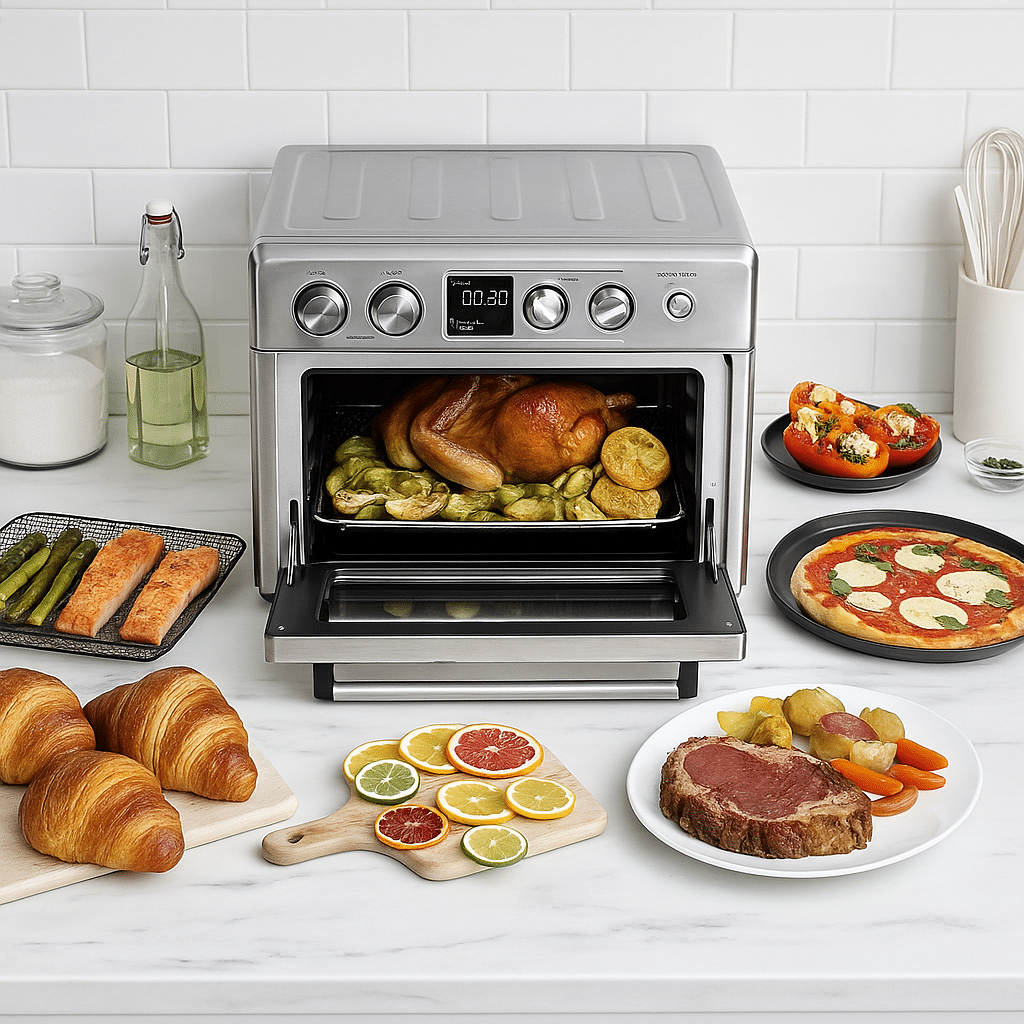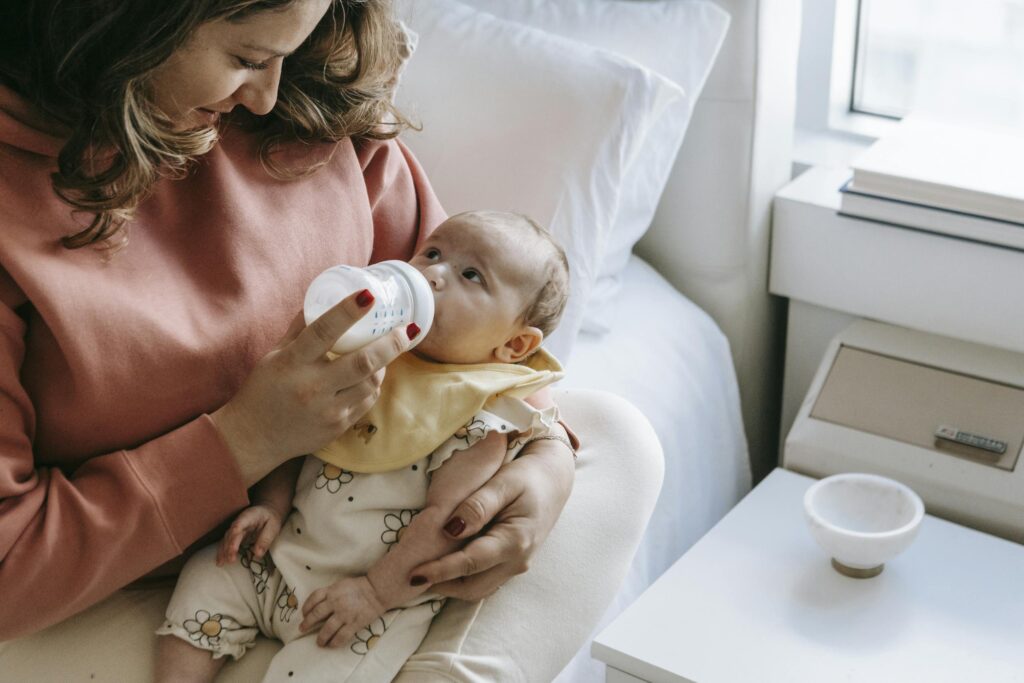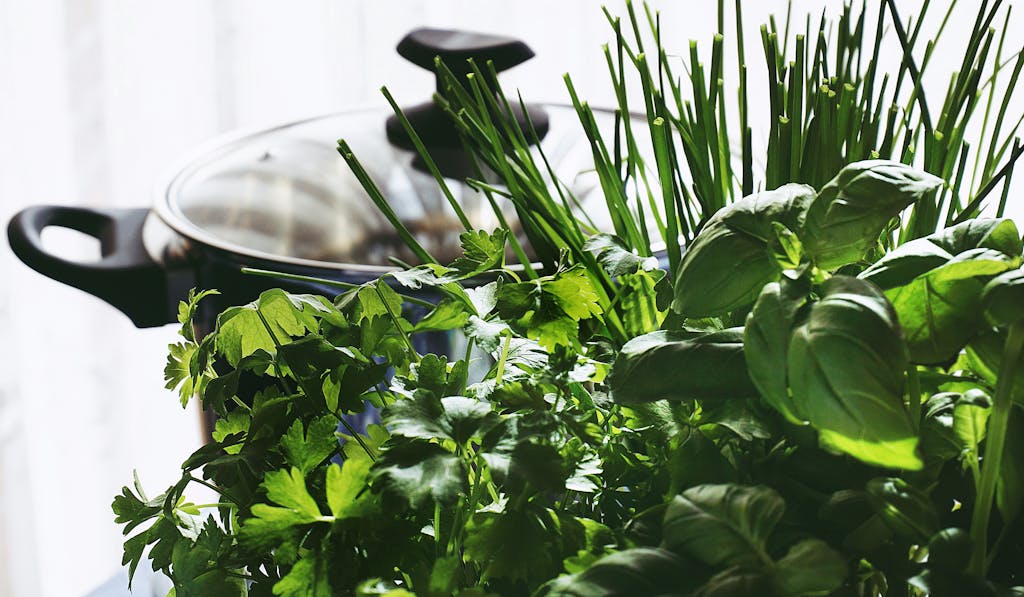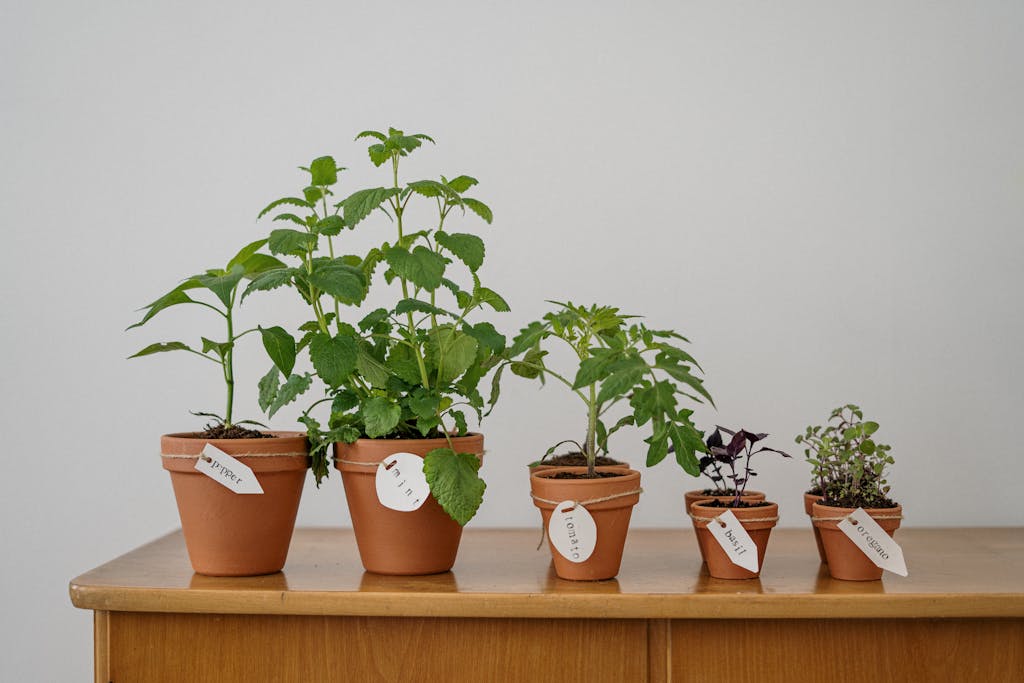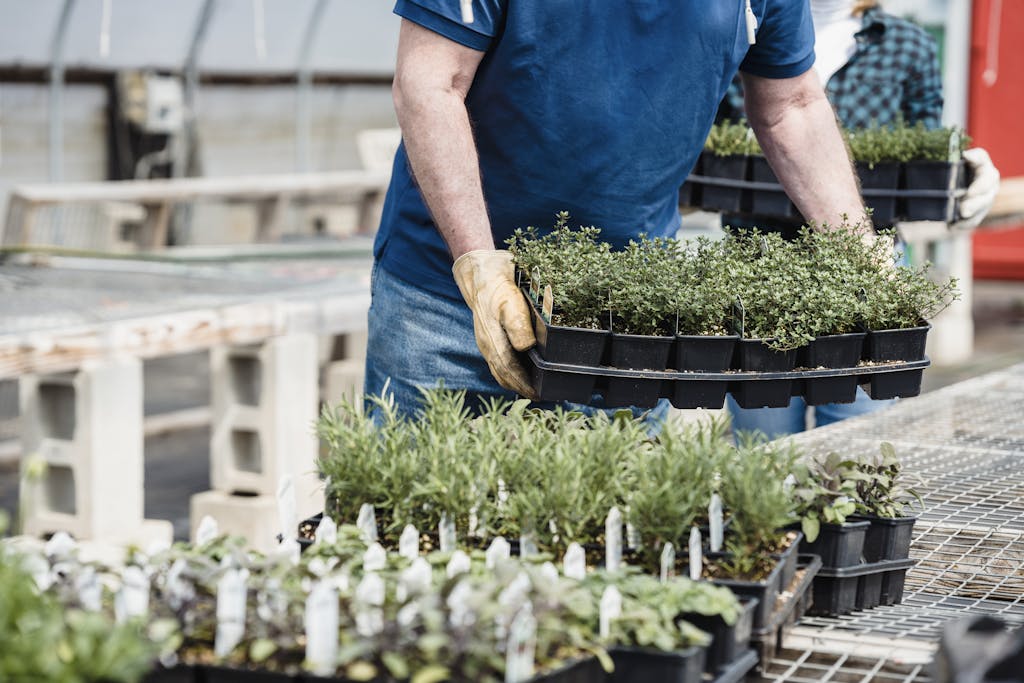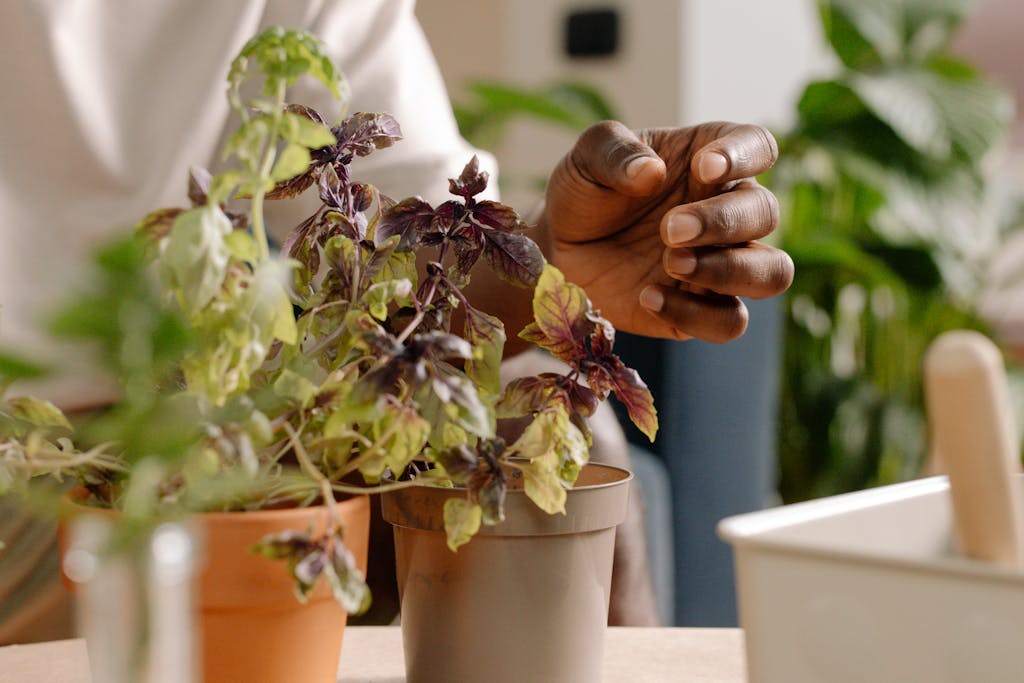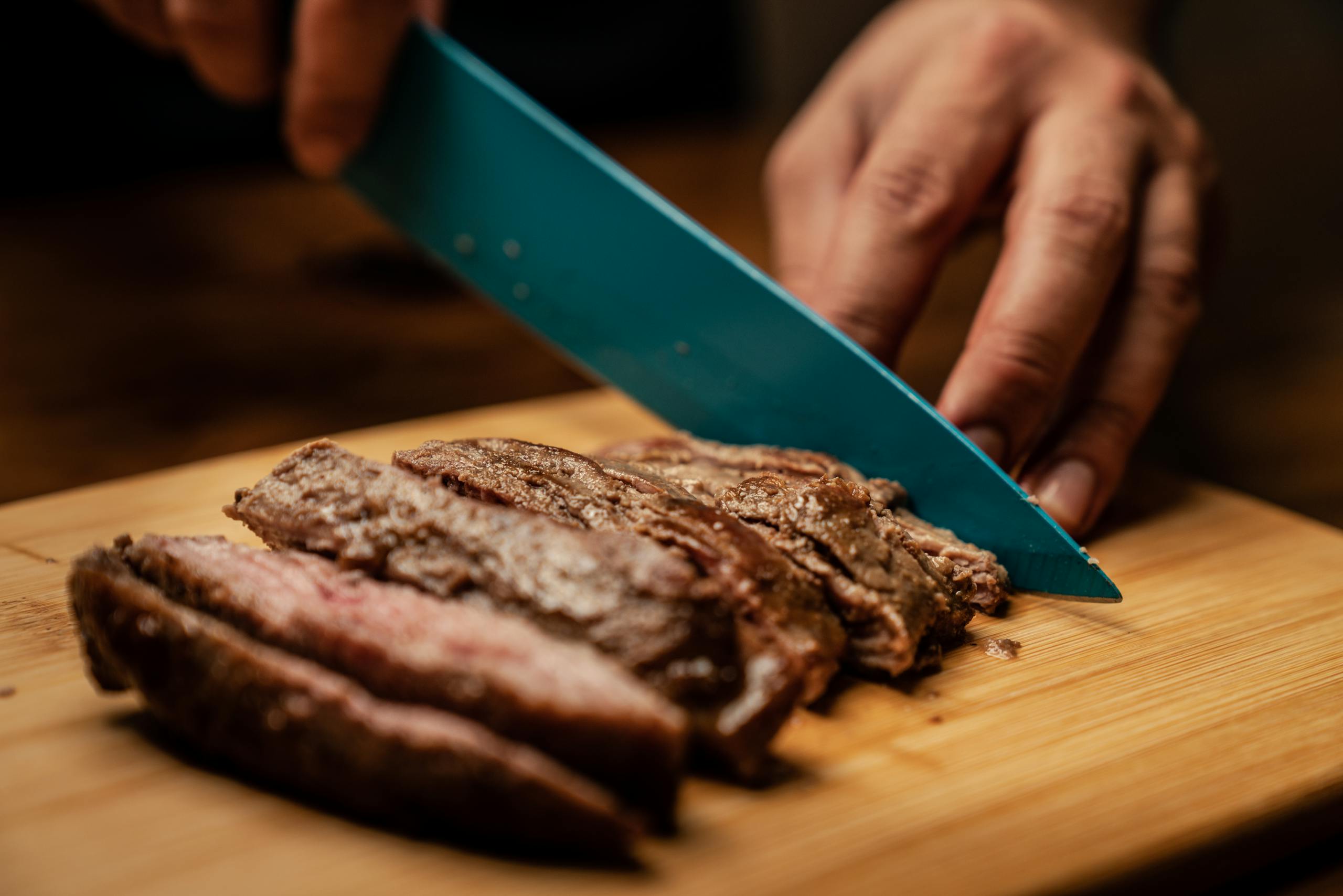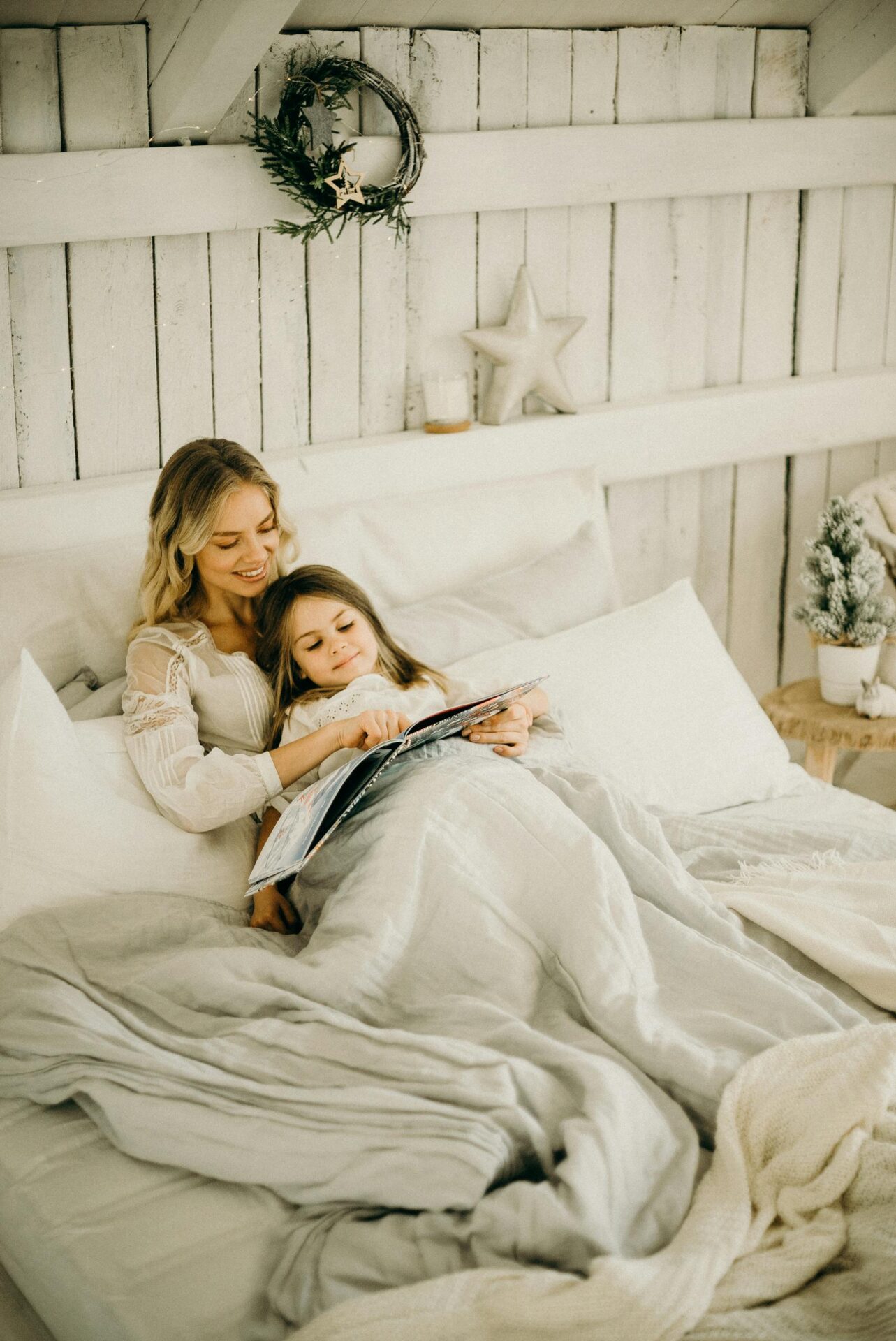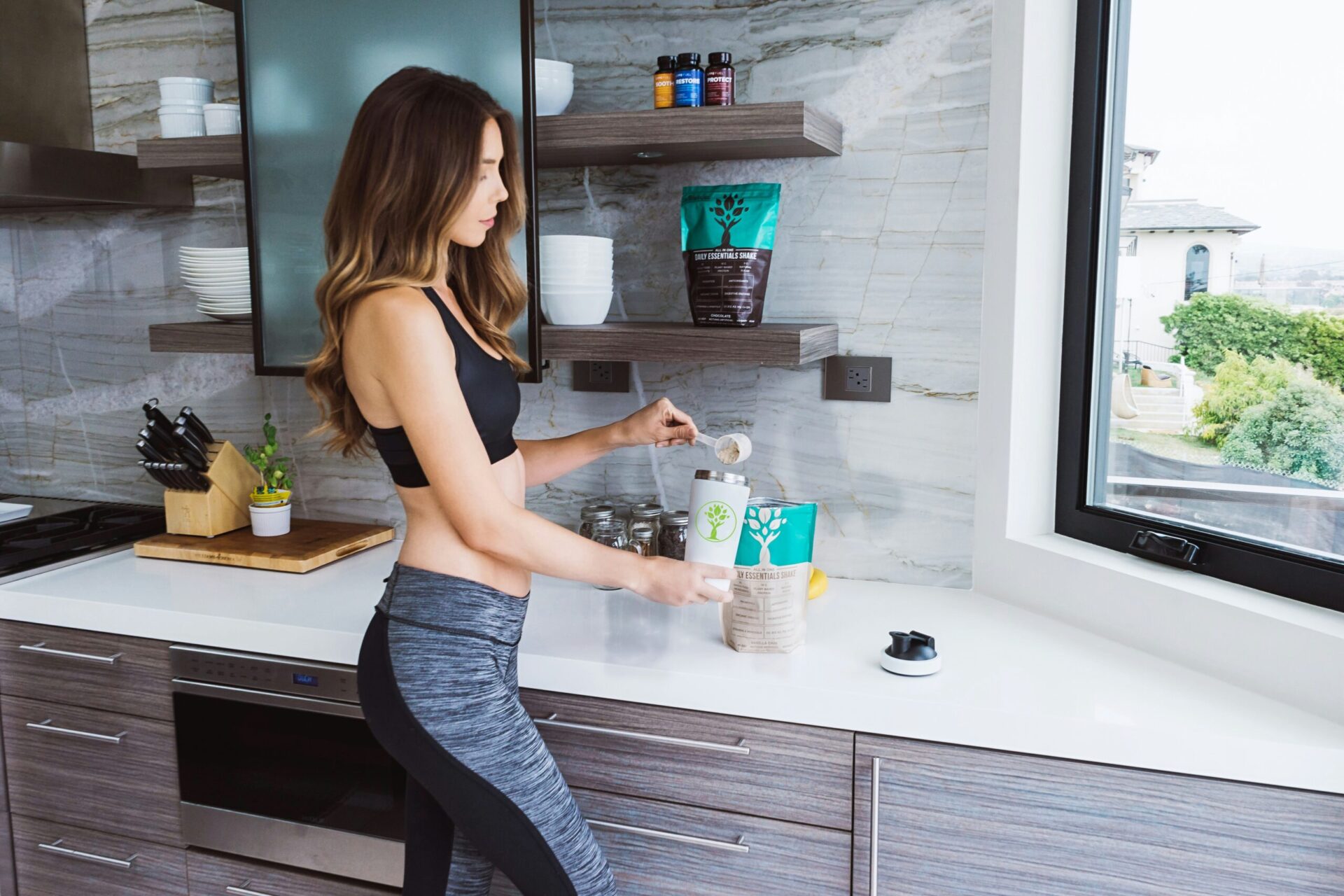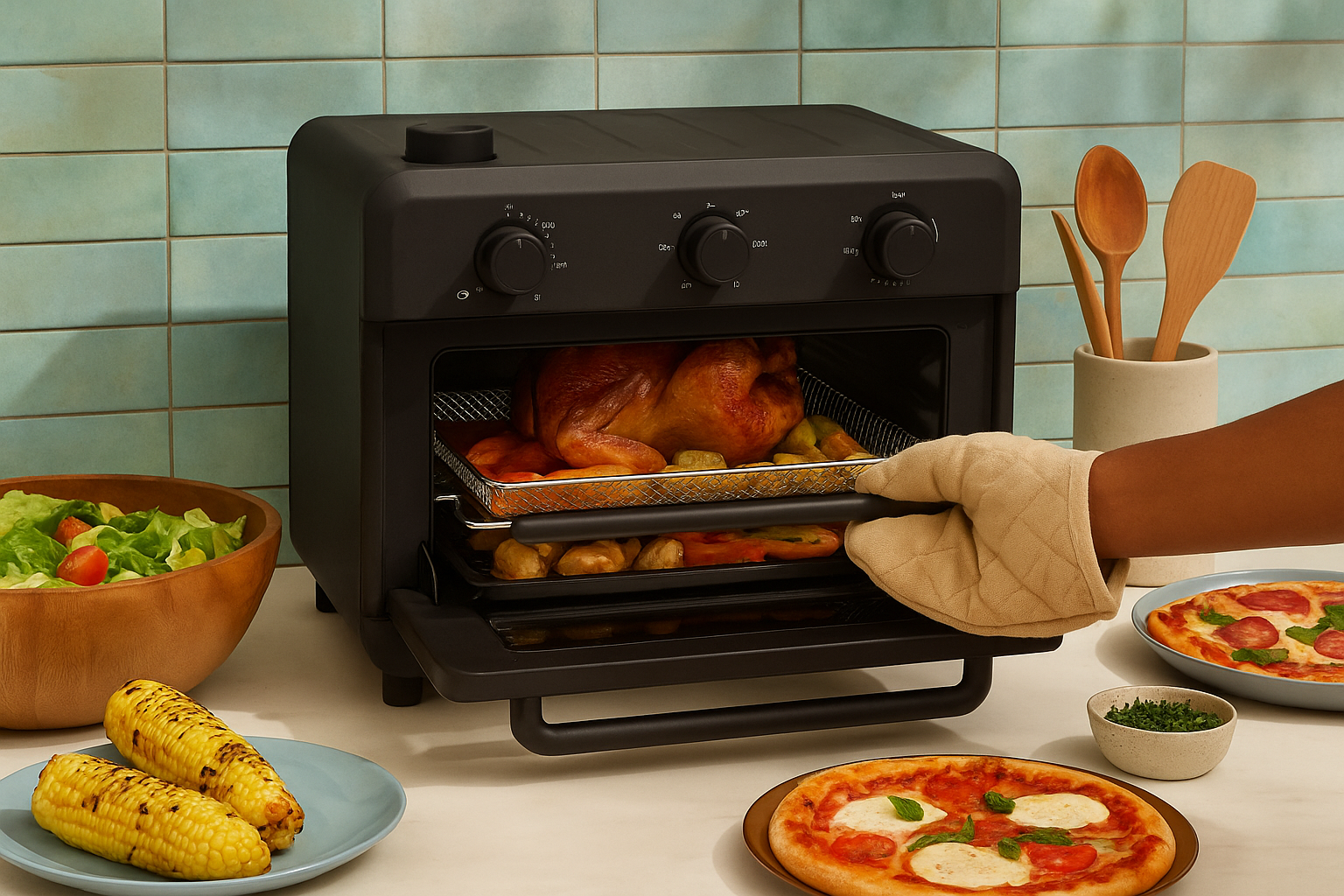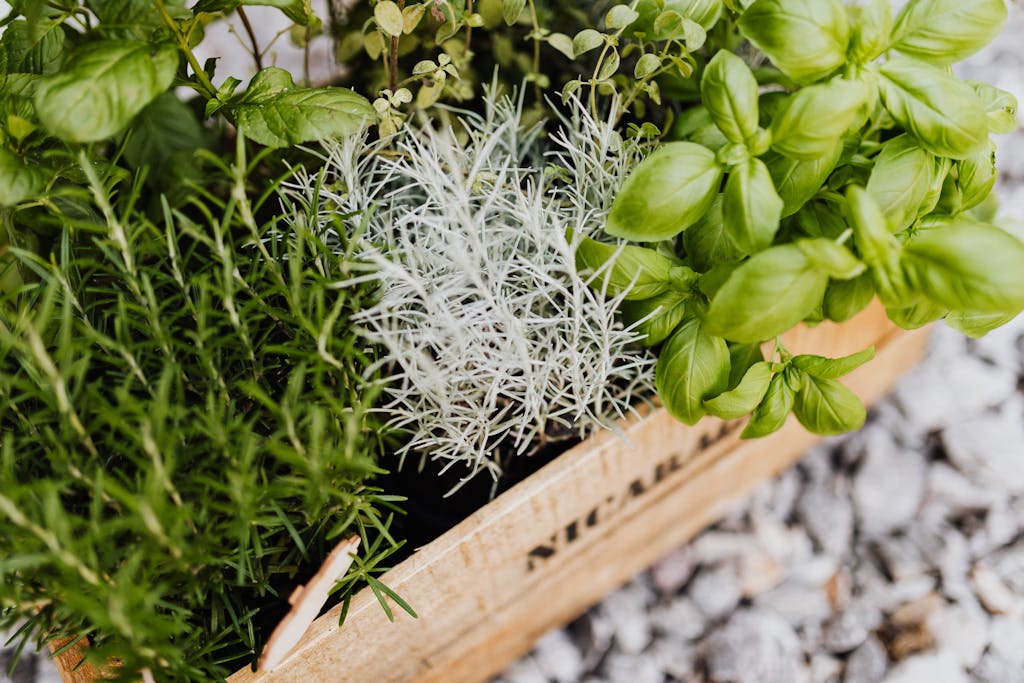
Starting a non-toxic herb garden at home is one of the easiest and most rewarding ways to dip your toes into gardening. Not only do homegrown herbs provide fresh flavors for your kitchen, they also ensure you know exactly what (and what not) has gone into your food.
In this beginner’s guide, we’ll show you how to start an organic herb garden from scratch, with an emphasis on keeping it truly non-toxic and Earth-friendly. You’ll also find recommendations for safe, natural gardening products – including smart hydroponic systems like the LetPot LPH-Max for effortless indoor growing. – so you can grow an herb garden that’s both healthy for you and gentle on the planet.
Before We Get Started…
Many of the items below ship with Amazon Prime. If you’re not a member yet, joining now makes checkout easier.
Why Grow an Organic, Non-Toxic Herb Garden?
Unbeatable Freshness & Flavor
Snip basil or rosemary right before cooking for max flavor. Homegrown herbs taste brighter and pack more nutrients than store-bought bunches that have traveled for days.
Health Benefits
Herbs like oregano and rosemary have powerful antibacterial, anti-inflammatory, and mood-boosting benefits. Mint and lemon balm make calming teas for digestion and stress. Growing your own means no pesticide residues.
Eco-Friendly & Budget-Friendly
Grow herbs, skip plastic packaging and food miles. A single packet of seeds costs less than one store-bought bunch — and gives you fresh refills all season long. Plus, your garden helps purify the air and support pollinators.
Beginner-Friendly Plants
Herbs are hardy, forgiving, and grow in small spaces. Most don’t need much care and will thrive in pots, beds, or window boxes — even easier with hydroponic kits like LetPot’s Wi-Fi enabled smart garden systems.
Planning Your Herb Garden: Location and Setup
Before you get your hands dirty, take a little time to plan. A bit of forethought about where and how you’ll grow your herbs can make all the difference in an abundant, low-maintenance herb garden.
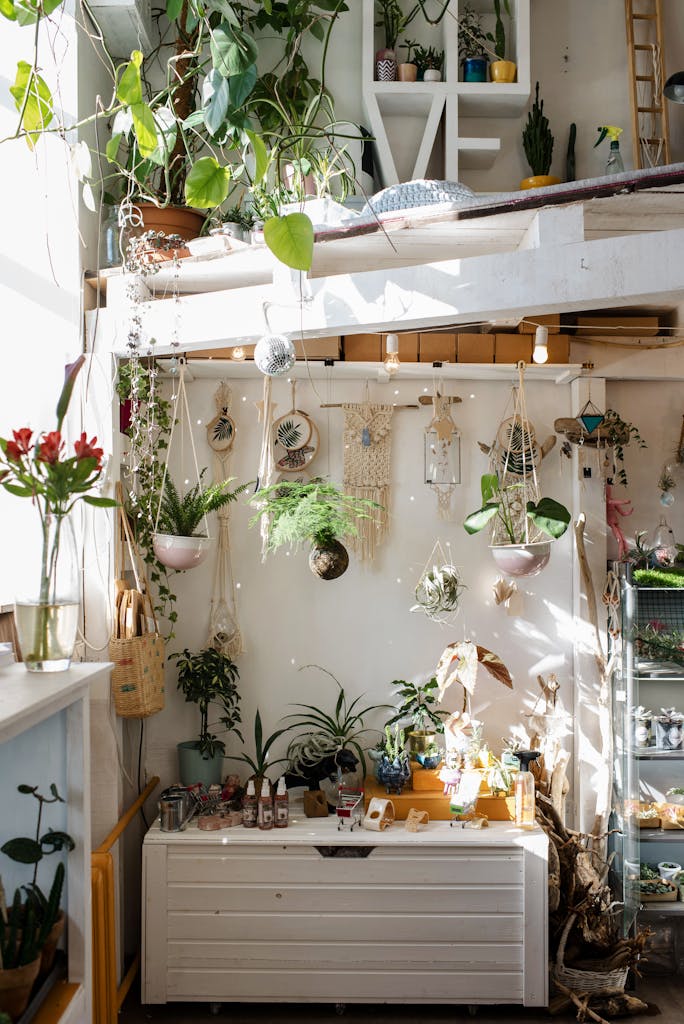
Sunny, Convenient Location
Most herbs love sun and need about 6–8 hours of sunlight per day. Observe your space – do you have a sunny windowsill in the kitchen, a bright patio corner, or a section of the yard that basks in morning sun? Ideally, choose a spot that’s easy to access when you need a handful of herbs while cooking. Classic “kitchen gardens” are often right outside the kitchen door or on a windowsill for this very reason.
If you’re in an apartment, a south- or west-facing window or balcony works great. Urban gardeners can succeed with container herbs on a fire escape or rooftop, while those in rural areas might dedicate a section of the yard. The key is accessibility – make it simple to tend and harvest your herbs, and you’ll use them more often.
Urban vs. Rural Considerations
In a rural or suburban setting with land, you might plant a dedicated herb bed or mix herbs into your vegetable garden or landscape. In dense urban environments, think vertically and container-wise. Even if you don’t have ground soil, herbs will happily grow in pots, planters, window boxes, hanging baskets, or stackable planters. Or use a minimalist Lettuce Grow hydroponic system right on your kitchen counter.
Remember, no yard is too small – herbs can flourish on a tiny balcony or stoop as long as they have sun and water. Get creative: repurpose wooden crates or large ceramic bowls as planters, or join a community garden for a little plot of earth. Whether your garden is a windowsill in the city or a backyard in the country, you can adapt herb gardening to your lifestyle.
Climate and Placement
Consider your climate zone and microclimate. If you live in a very hot region, herbs might appreciate some afternoon shade (parsley and cilantro, for example, don’t love scorching heat). In cooler climates, make sure your herbs get maximum sun and consider cold-hardy perennial herbs (like mint, chives, sage) that survive winters.
You can start with hardy herbs that are known to do well in your region – local gardening guides or extension offices often list herbs suited for your zone. Also think about convenience: if watering is a concern, place containers near a water source or consider self-watering planters. If deer or rabbits roam your area, you may need to place herbs in raised planters or protect them. Planning these practical aspects now will set you up for success.
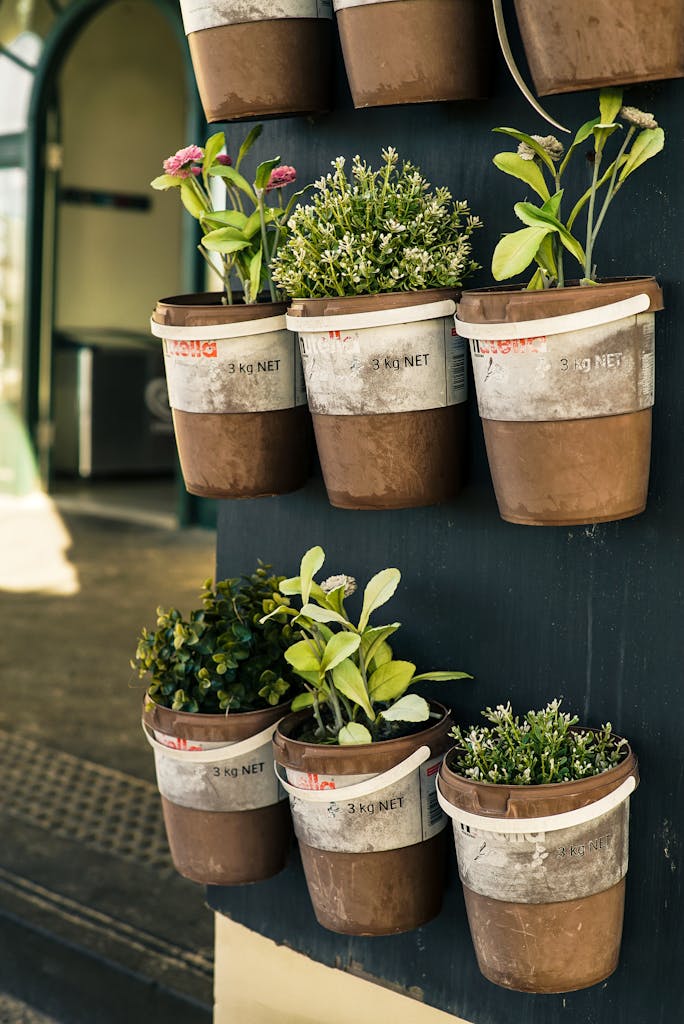
Safe Containers for Your Non-Toxic Herb Garden
One major advantage of herbs is their versatility – they can grow in the ground or in various containers. You can even grow them indoors year-round with a smart hydroponic system like the LetPot LPH-Max, which offers a non-toxic, soil-free solution for modern herb gardening.
Since we’re focusing on non-toxic gardening, it’s important to choose your garden setup and materials wisely. Avoid anything that could leach harmful chemicals into your herbs. Here are some non-toxic options to consider (and what to avoid):
Containers
vs. Beds
If you have ample space and ground, a dedicated raised herb bed can yield a big, mixed herb garden (and looks lovely). If space is limited or you want flexibility, containers are the way to go – you can rearrange them, bring pots indoors in winter, or start with just a few on a balcony. It’s totally fine to do a bit of both: perhaps a raised bed outside for perennial herbs, and a few pretty pots of basil and mint by the kitchen window. Keep your space clean with a foldable gardening mat.
The goal is to use safe, non-toxic containers that suit your space and to provide enough room for roots. Herbs can be grown quite closely together in larger containers – in fact, planting several herbs in one container can help them retain moisture and gives an attractive “living bouquet” effect, as long as each plant has a few inches to spread.
Soil, Water & Nutrients: Keeping It Organic
Herbs are not very fussy about soil, but giving them a healthy, organic growing medium will ensure they thrive. Here’s how to prepare your soil in a non-toxic, sustainable way:
Choosing Herbs to Grow (Great Options for Beginners)
Basil
Fast-growing annual that thrives in warm weather and full sun. Pinch the tops to keep it bushy and prevent early flowering. Needs regular watering, especially in hot spells. Great for pesto, salads, and pasta.
Parsley
A hardy biennial often grown as an annual. Grows well in sun or partial shade and resists pests. Flat-leaf is best for flavor, curly adds texture. Keep soil moist and harvest outer stems for continuous growth.
Mint
Super vigorous and best grown in pots to prevent spreading. Likes moist soil and grows in sun or shade. Comes back yearly in most climates. Great for teas, cocktails, and deterring pests near veggie beds.
Chives
Cold-hardy perennials with a mild onion flavor. Great in eggs, potatoes, and salads. Grows in clumps that can be divided every couple of years. Easy to grow in full sun and well-drained soil. Blossoms attract pollinators.
Thyme
A low-growing, drought-tolerant perennial that loves full sun and sandy soil. Doesn’t need much water. Ideal for containers and borders. Use sparingly in soups, meats, and stews — a little goes a long way.
Oregano (and Marjoram)
Sun-loving perennials with strong flavor. Oregano is bold and spreads easily; marjoram is milder and sweeter. Great in Italian and Mediterranean dishes. Let some bloom for pollinators — bees love them!
Rosemary
Evergreen perennial in warmer zones; grow in pots and bring indoors in winter if needed. Loves sun, sandy soil, and dries out between waterings. Offers a piney, savory flavor perfect for roasted dishes.
TIP for beginners
You don’t need to grow every herb at once. Start with 3–5 you use often, or use a LetPot indoor growing system that does the work for you. Basil, parsley, mint, and thyme are great first picks. Consider seasonality too — cilantro and dill prefer cooler weather, while basil and rosemary love summer heat. Once you’re comfortable, you can add others like sage, lavender, or lemongrass.
Starting from Seeds vs. Seedlings
When it comes to getting plants for your herb garden, you have two main choices: start from seed or purchase small nursery plants (seedlings). Both are viable, especially for organic gardening – but there are some pros and cons and non-toxic tips for each route:
Starting Herbs from Seed
Using Seedlings
Whether seed or seedling, try to plant your herbs at the right time: warm-season herbs (basil, etc.) should go out after frost danger is past; cool-season herbs (cilantro, dill) can go earlier. Harden off indoor-grown seedlings before planting outside (gradually acclimate them to sun and wind over a week). When transplanting, be gentle with roots and water them in well. Soon enough, they’ll take off in their new organic home.
Heirloom vs. Organic Seeds: What You Need to Know
When starting your non-toxic herb garden, you might come across terms like “heirloom,” “organic,” and “non-GMO.” Here’s what they really mean—and why you don’t always need certified organic seeds if you’re growing organically at home.
Heirloom seeds come from plant varieties that have been passed down for generations, often over 50 years or more. These seeds are open-pollinated, which means they’ll produce plants true to type—and you can save the seeds year after year. Heirloom herbs often have richer flavors, stronger aromas, and more natural resilience. They’re also better for biodiversity and seed sovereignty, helping preserve plant varieties that might otherwise disappear.
Organic seeds, on the other hand, are grown without synthetic fertilizers or pesticides. They’re certified by agencies like the USDA to meet organic farming standards. Organic certification is important for large-scale agriculture, but it’s not the only way to grow clean, chemical-free herbs at home.
If you’re using organic methods in your garden—clean soil, non-toxic containers, and natural pest control—you don’t need certified organic seeds to grow organically. Heirloom seeds that are untreated and non-GMO can be just as good (if not better) for your garden. The key is how you grow.
So whether your seed packet says “organic” or not, focus on non-GMO, untreated seeds from a trusted source. If they’re heirloom, even better—you’ll be growing herbs with history.
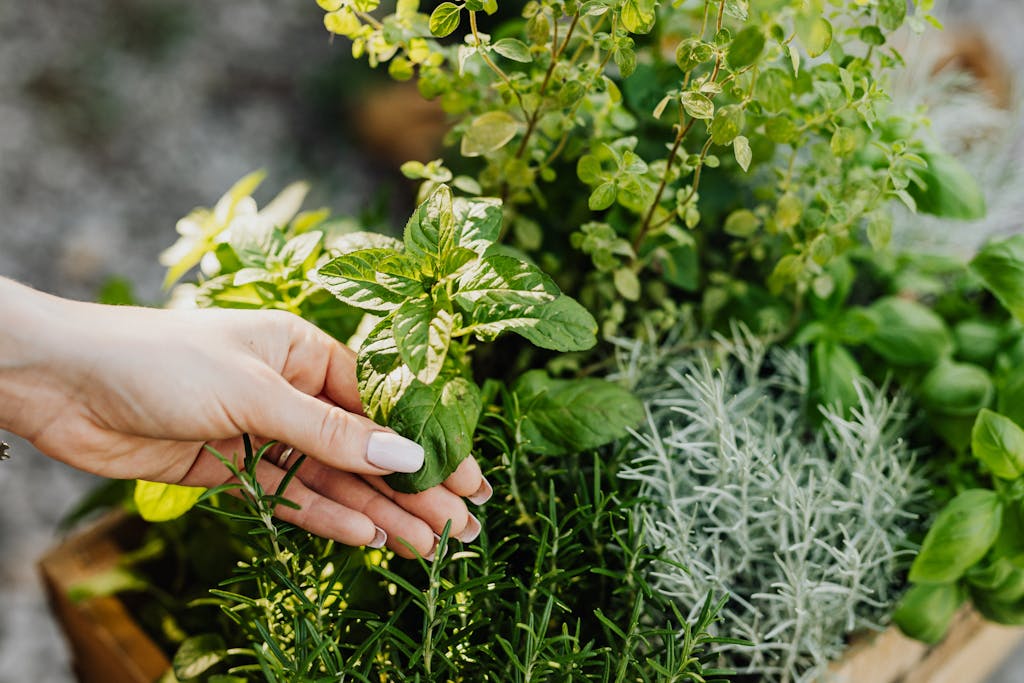
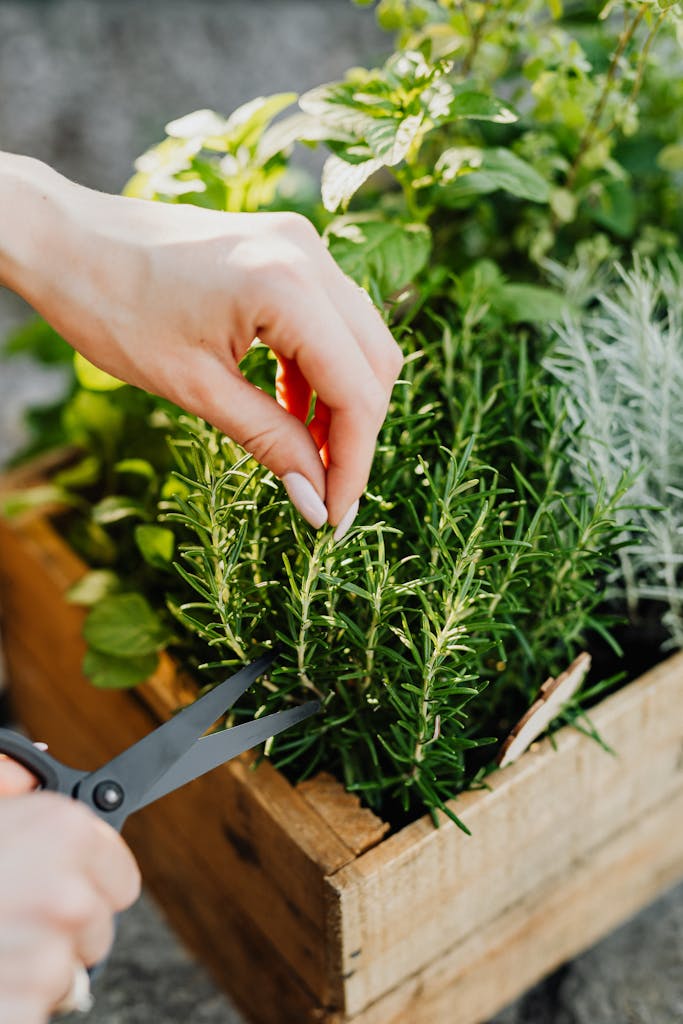
Caring for Your Herb Garden Organically
Once your herbs are planted, your ongoing tasks will be pretty simple: watering, occasional feeding, pruning/harvesting, and watching for any problems. Here’s how to care for your non-toxic herb garden the non-toxic way:
By caring for your herbs with organic practices, you not only get healthier plants but you also maintain a healthy mini-ecosystem. The soil food web thrives, beneficial insects come to visit, and you won’t have any nasty chemical residues on your hands or on your dinner plate. Next, let’s talk more about managing pests and problems without toxins.
Natural Pest Control for Your Non-Toxic Herb Garden
One of the joys of herb gardening is that herbs are generally less prone to pests than many veggies – their aromatic oils often repel insects. That said, you might still encounter some common pests or diseases, especially on tender new growth or indoor plants. We’ll tackle this the organic way, using integrated pest management and natural solutions.
Top 10 Non-Toxic Gardening Essentials
To set you up for success, here’s a curated list of organic gardening products and tools that align with our non-toxic, beginner-friendly herb gardening approach. These items will help you grow a thriving non-toxic herb garden without harmful chemicals. (As always, read labels and product details to ensure they meet your needs.)
LetPot LPH-Max Hydroponics Growing System
This smart indoor garden takes the guesswork out of growing fresh herbs with automatic watering, lighting, and nutrient reminders—all controlled via app or Wi-Fi. But what really sets it apart is the BPA-free, food-safe ABS resin construction, ensuring nothing toxic leaches into your herbs. With space for up to 21 plants, a powerful 36W LED grow light, and a built-in drip irrigation system, it’s a high-tech but non-toxic way to grow basil, dill, or mint year-round—no backyard required. Perfect for apartment kitchens, windowsills, or anyone wanting fresh herbs with zero effort and zero chemicals.
LetPot LPH-SE Hydroponics Growing System
A smaller but still smart hydroponic garden with 12 GMO-free pods, perfect for beginners or compact kitchens. This model features a 24W LED grow light, 5.5L water tank, and Wi-Fi/app connectivity for easy monitoring. Made from BPA-free, food-safe materials, it supports healthy, non-toxic growing without fuss. Ideal for year-round herbs like basil, parsley, or mint—even if you’re short on space.
Lettuce Grow Counterstand
This elegant, compact hydroponic system is perfect for growing herbs and greens in even the smallest kitchens. Designed with non-toxic, sustainable materials like borosilicate glass and aluminum (no single-use plastics), it uses a soil-free wick system for mess-free, low-maintenance growing. The minimalist LED Glow Lamp provides full-spectrum light, ideal for indoor harvests year-round. A beautiful, functional choice for toxin-free indoor gardening.
4-in-1 Soil Moisture Meter
A digital 4-in-1 soil tester that measures moisture, pH, temperature, and sunlight—perfect for fine-tuning your non-toxic herb garden conditions without guesswork. This upgraded version features a large, backlit LCD screen and a rotating head for easy reading. It’s fast, accurate, and easy to use: just insert into damp soil and get real-time insights in seconds. Use it to dial in growing conditions, troubleshoot plant issues, and grow more confidently—whether indoors or out. Ideal for beginner and seasoned gardeners alike.
Spade To Fork Organic Herb Garden Starter Kit
A comprehensive kit containing 5 types of Certified USDA Organic, non-GMO herb seeds (basil, cilantro, parsley, sage, and thyme), organic soil discs, peat pots, plant markers, and a 10-page growing guide. It’s perfect for beginners starting from seed, and everything is 100% organic – a great way to begin your herb journey on the right foot.
D’vine Dev Terracotta Planter Pots
A beautifully crafted set of two terracotta pots (6″ and 8″) with drainage holes to keep your herbs healthy and roots well-aerated. Made from natural, non-toxic clay, these planters are a timeless, chemical-free option for growing edible herbs like basil, rosemary, or oregano. Their simple, earthy design looks great indoors or out—perfect for anyone building a non-toxic herb garden from the ground up.
GreenStalk 5-Tier Vertical Garden Planter
A stackable planter system for those short on space. Made in the USA from high-quality, food-grade plastic that is UV-resistant and completely free of BPA, BPS, and PVC. It has a clever internal watering system for even irrigation. You can grow 20+ plants in just a 2-foot footprint! This is a fantastic solution for balcony or patio gardens, letting you create a lush, upright herb tower that’s safe and durable.
PHYEX Fabric Grow Bags
Set of breathable fabric pots made with 300g non-woven polyester that is BPA-free, recommended for organic gardening. These sturdy grow bags come with handles and allow excellent drainage and root aeration. Use them for larger herbs or a grouping of herbs (e.g., one bag could hold a mini “pizza garden” of basil, oregano, and parsley together). They’re reusable and fold flat for storage.
Boldly Growing Cedar Patio Planter with Shelf
A premium, non-toxic gardening solution thoughtfully crafted by the family-owned company Boldly Growing. This durable planter is made from untreated, rot-resistant cedar, ensuring no chemical stains or pressure-treat treatments. It’s designed and manufactured in the USA, so you’re getting top-tier craftsmanship and a commitment to eco-conscious design.
The elevated design is both ergonomic and functional—perfect for patio or balcony gardens. The included lower shelf adds practical storage space for soil, tools, or pots, making it a smart space-saving choice.
Espoma Organic Potting Mix
A high-quality potting soil blend that’s OMRI-listed for organic gardening and contains only natural, organic ingredients with no synthetic chemicals. It’s enriched with mycorrhizae (beneficial fungi) to help plant roots and has a bit of organic fertilizer built in. Use this to fill your containers or raised beds for a chemical-free growing medium that your herbs will love.
Wiggle Worm Pure Worm Castings (Organic Fertilizer)
100% pure earthworm castings that act as a gentle, natural fertilizer and soil conditioner. This product is fully organic and safe for all plants, known to improve soil fertility and aeration for healthier growth. Mix it into your potting mix or top-dress your herbs with a handful every couple of months. It won’t burn plants and continuously releases nutrients and microbes. Think of it as giving your herbs a vitamin boost!
Nani’s Neem and Peppermint Oil Spray
A plant-based pest control spray made with 100% cold-pressed neem oil, USA-grown peppermint oil, and geraniol – no synthetic additives. This ready-to-use formula is safe for herbs, indoor plants, and edible gardens, offering natural protection against pests while leaving behind a fresh, minty scent. Made in the USA by a family-owned brand, it’s a gentle, non-toxic pest solution for your organic herb garden.
Harris Food Grade Diatomaceous Earth (with Duster)
A powdered natural fossil shell flour that’s 100% chemical-free and safe to use around kids and pets, yet deadly to crawling insects. This comes with a dust applicator for easy use. Sprinkle a thin layer on soil surfaces or around plant bases to deter slugs, ants, earwigs, and other unwanted pests. You can even dust it on leaves for things like beetles (just wash herbs before eating). It’s an ideal non-toxic pest control for an organic garden.
Survival Garden Seeds Compact Dill – Non-GMO Heirloom Dwarf Variety
A non-GMO, heirloom dill variety perfect for small spaces. This dwarf plant thrives in containers or raised beds and offers classic dill flavor without taking over your garden. Grown by a family-owned USA company focused on open-pollinated, seed-saving-friendly varieties for long-term sustainability.
Plant Repotting Mat
A waterproof potting tray made from thickened, PE (polyethylene) — perfect for indoor gardening without the mess. This foldable 26.8″ x 26.8″ mat creates a clean workspace for repotting herbs, starting seeds, or mixing soil right on your countertop or balcony. The raised edges contain spills, while the durable PE fabric is BPA-free, phthalate-free, and safe for working around edible plants. A must-have for apartment gardeners or anyone short on outdoor space. Rolls up neatly for storage between uses.
Each of these products can help you maintain a healthy non-toxic herb garden without resorting to harmful chemicals. They’ve been selected to solve specific needs – from planting to feeding to pest control – while aligning with organic principles. By investing in a few key supplies like these, you’ll make your gardening journey smoother and ensure your herbs stay truly natural and safe.
Conclusion: Your Non-Toxic Herb Garden Awaits
You now have everything you need to start your own organic, non-toxic herb garden — even if you’re brand new to gardening. From safe containers and clean soil to natural fertilizers and pest control, each step helps ensure the herbs you grow are healthy, safe, and chemical-free.
Start small. A few pots of basil or mint on the windowsill is all it takes. With the right care, they’ll thrive — and so will your confidence. There’s something special about harvesting your own herbs for dinner or tea. It’s simple, satisfying, and a step toward a more sustainable lifestyle.
Not every herb will grow perfectly, and that’s okay. Gardening is a process. Stay curious, keep learning, and don’t be afraid to adjust as you go. Each season brings new growth — in your plants and in your skills.
So go ahead: mix up that organic potting soil, plant your seeds, and create your own naturally non-toxic herb garden. In just a few weeks, you’ll be harvesting homegrown herbs — and enjoying every bite. 🌿
join the newsletter
Want more non-toxic guides? Subscribe today.
